Abstract
It has been reported that thermal hysteresis proteins found in many cold-hardy, freeze-avoiding arthropods stabilize their supercooled body fluids. We give evidence that fish antifreeze proteins, which also produce thermal hysteresis, bind to and reduce the efficiency of heterogenous nucleation sites, rather than binding to embryonic ice nuclei. We discuss both possible mechanisms for stabilization of supercooled body fluids and also describe a new method for measuring and defining the supercooling point of small volumes of liquid.
Full text
PDF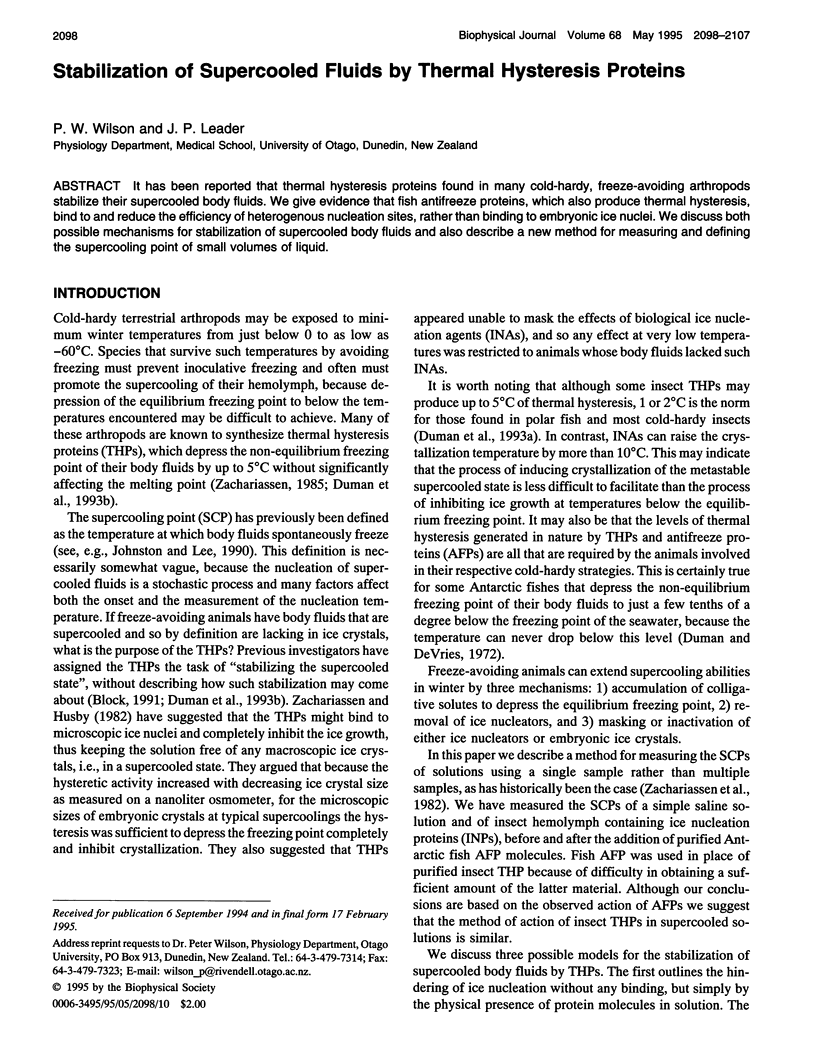
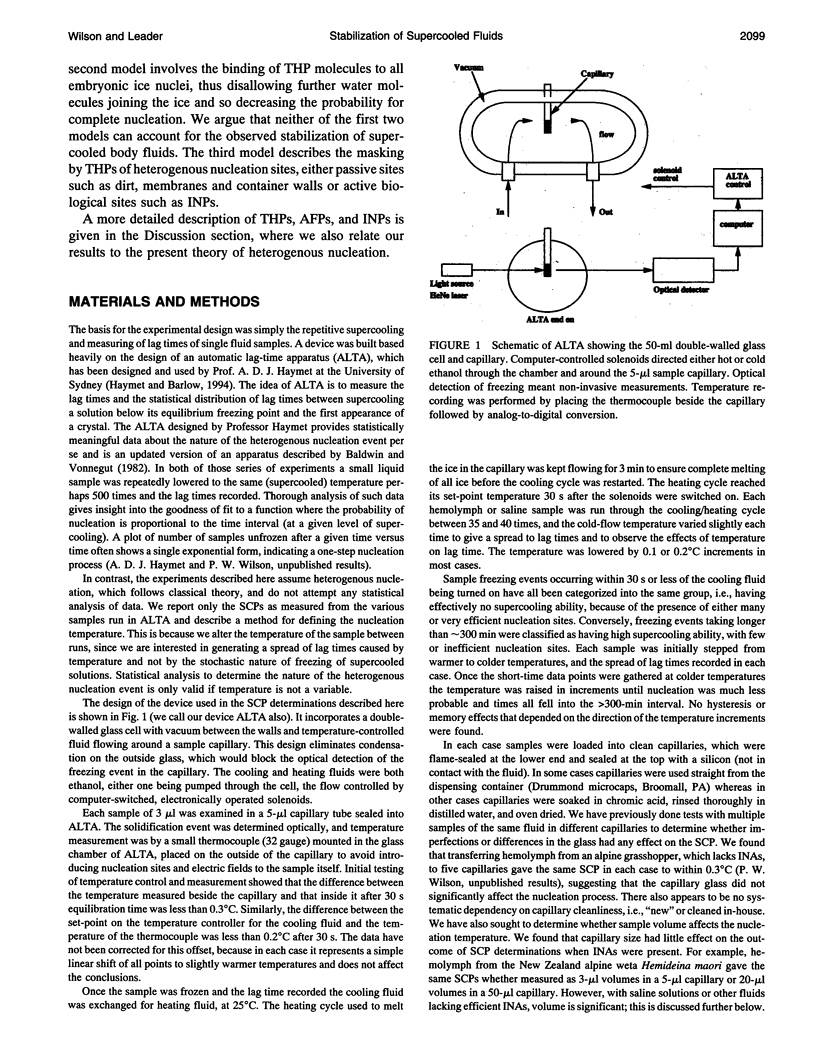
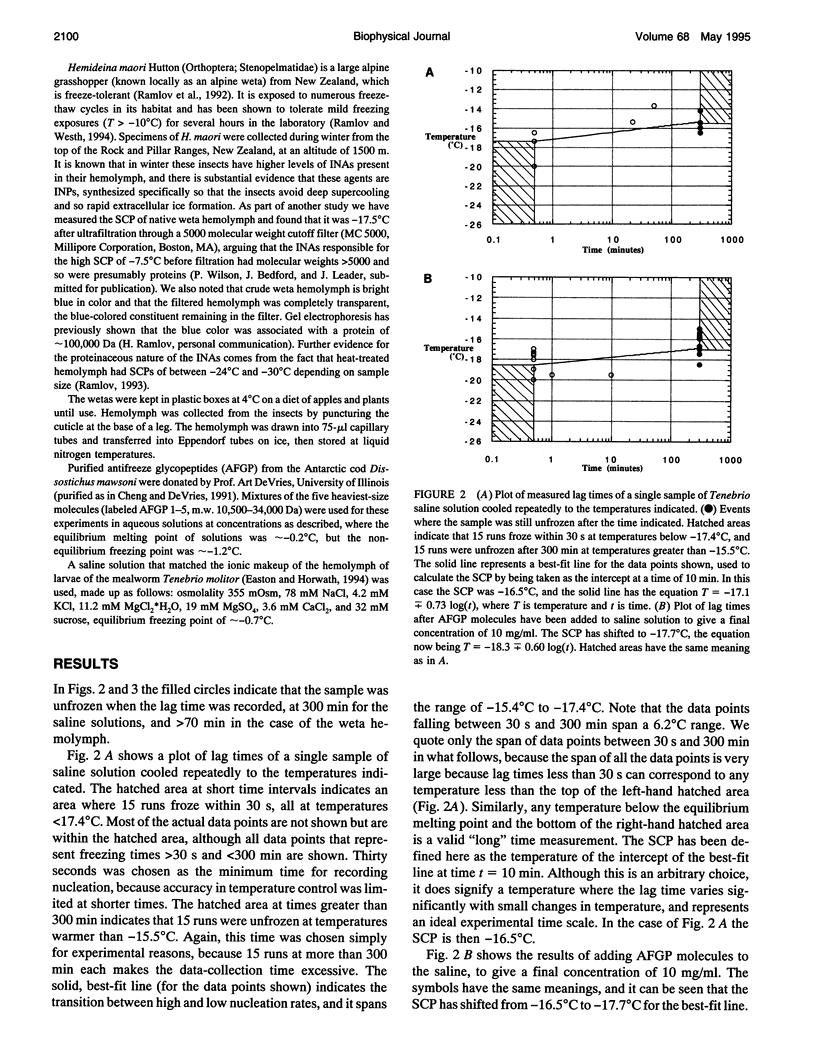
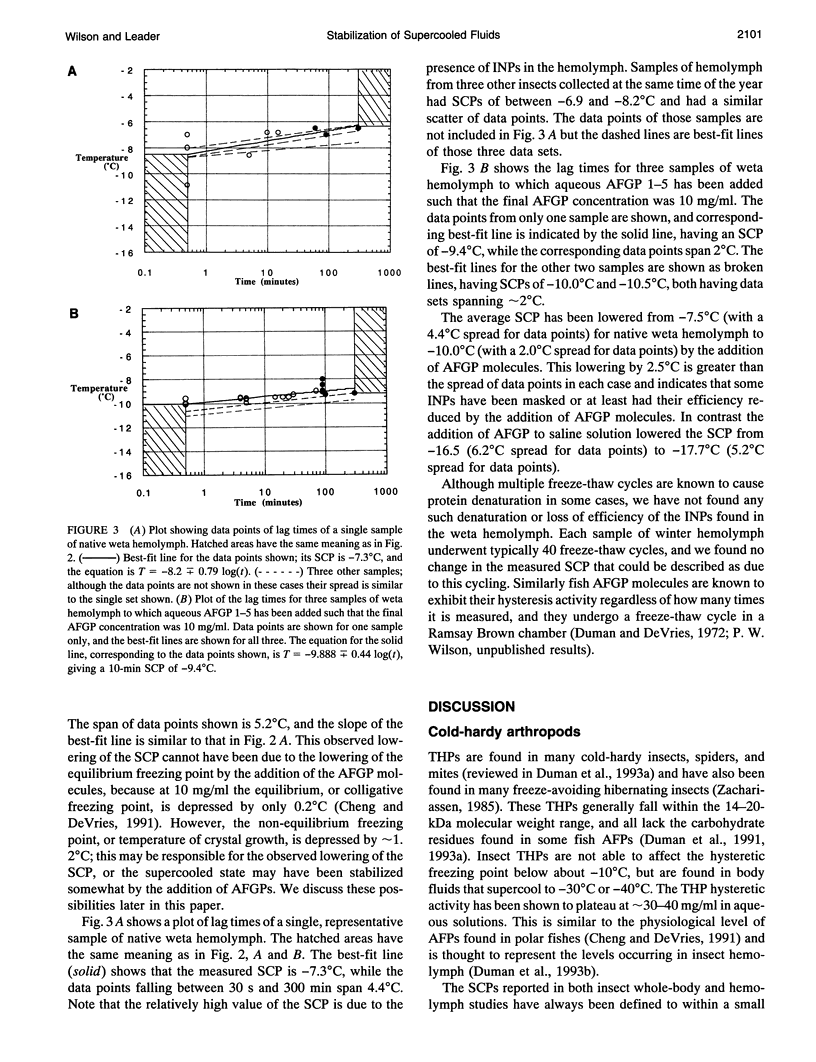
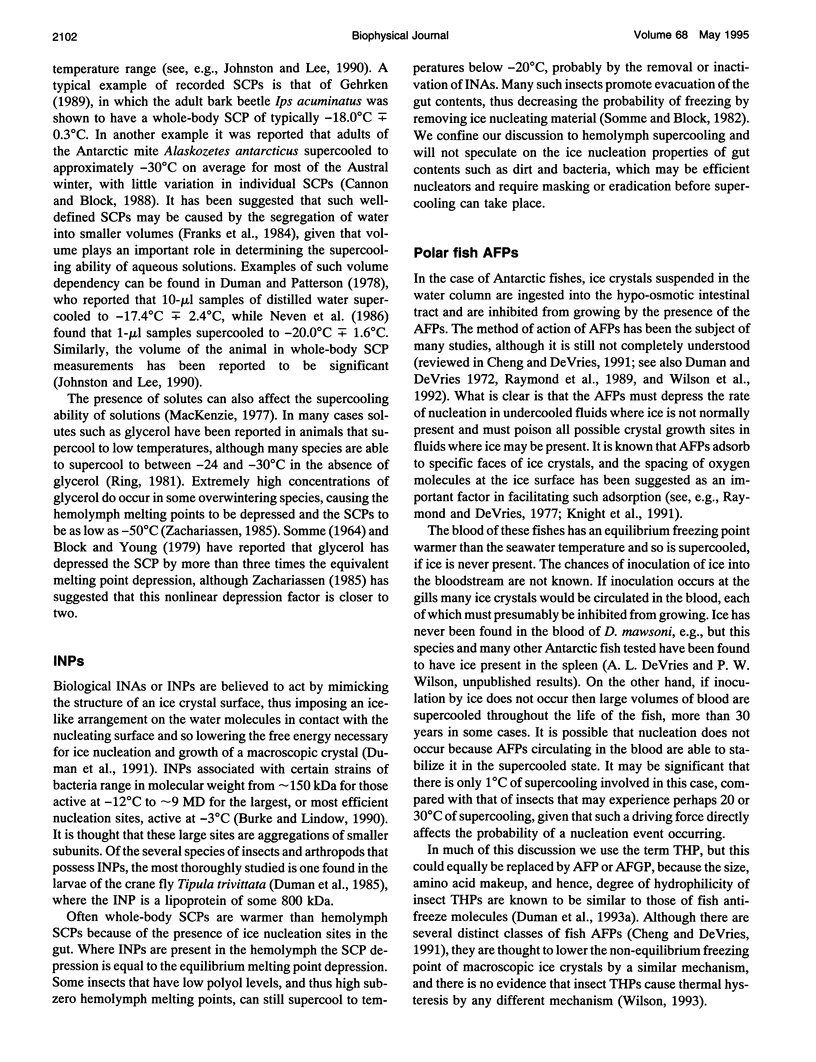
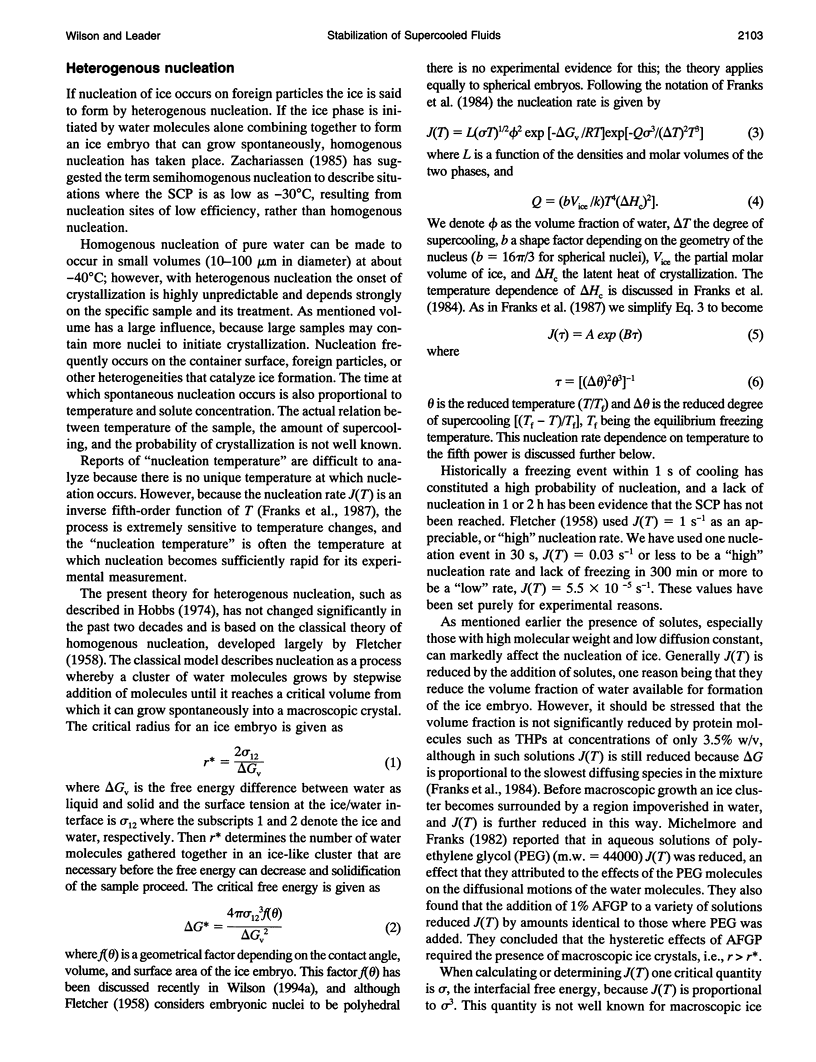
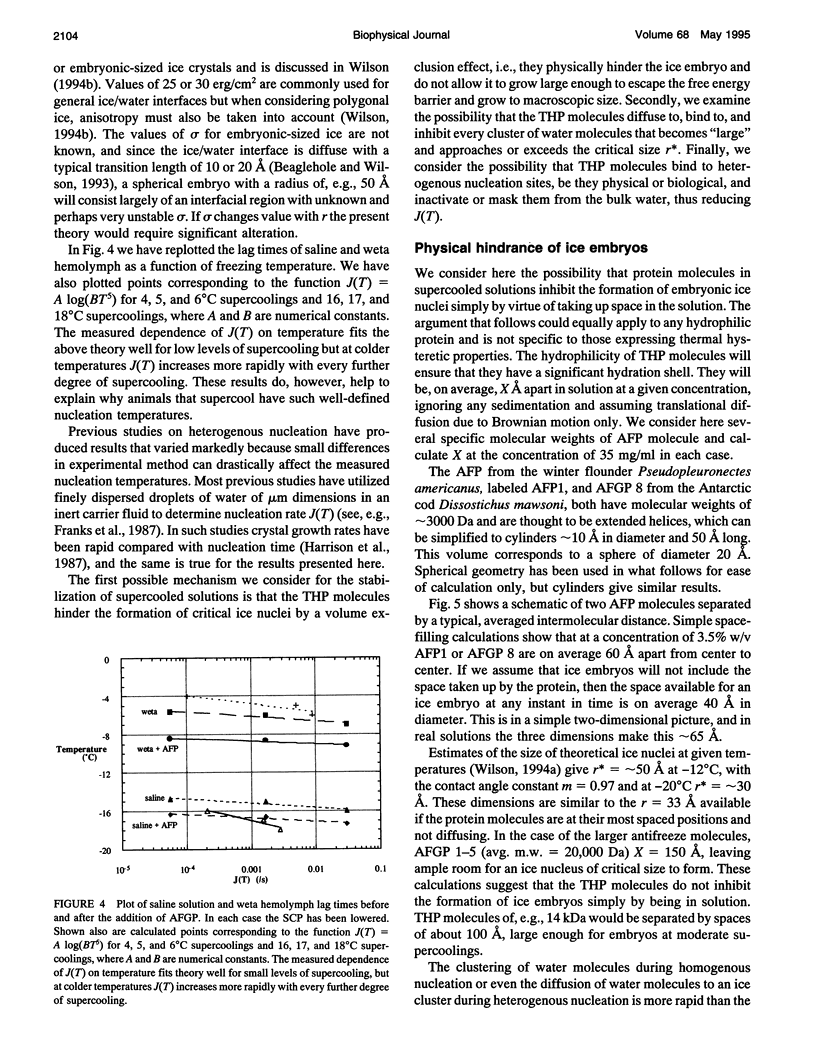
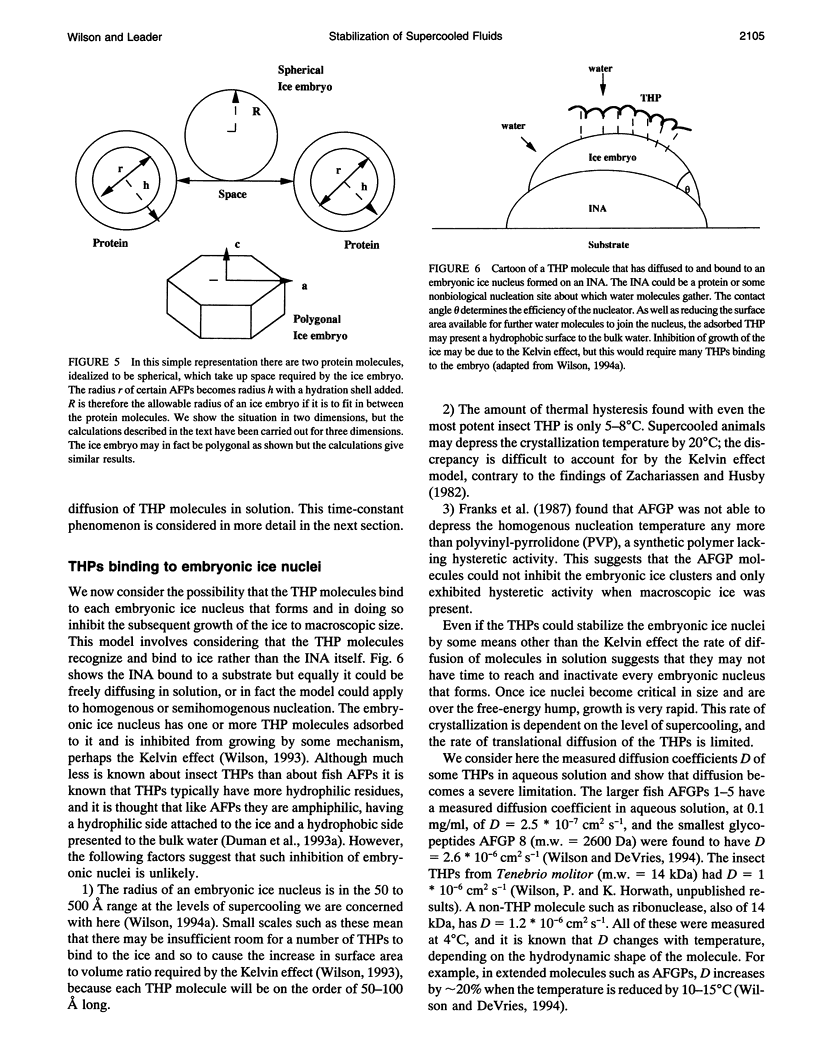
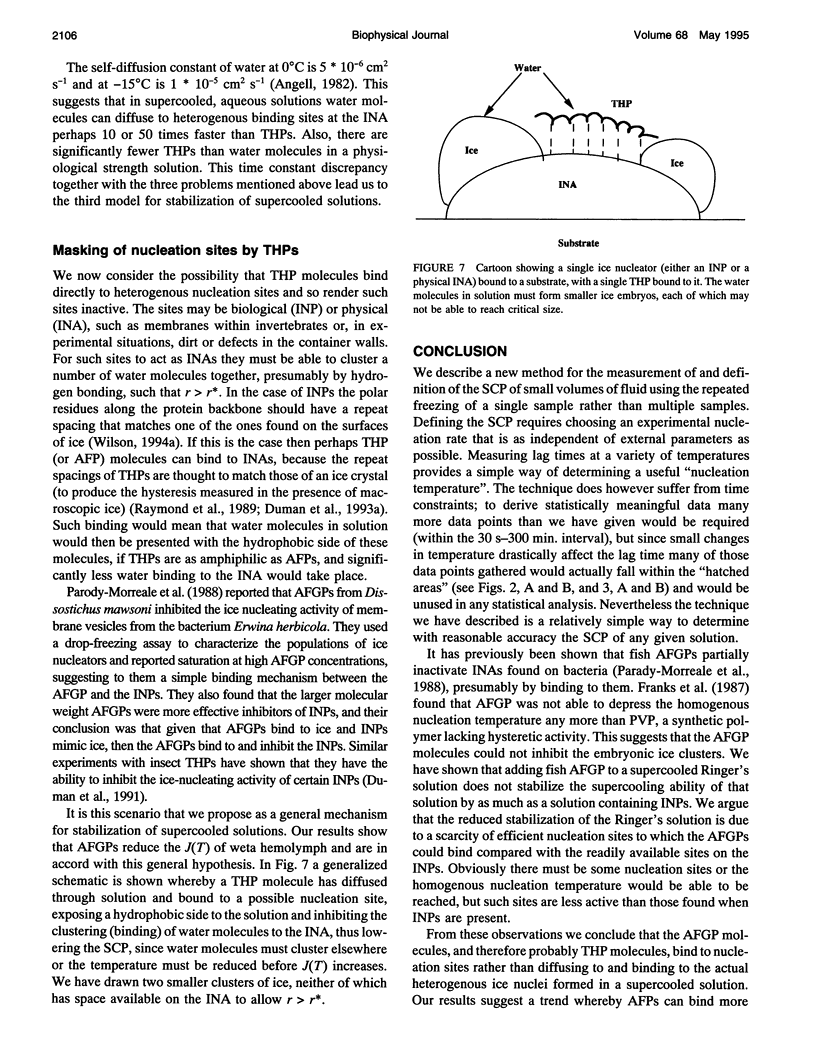
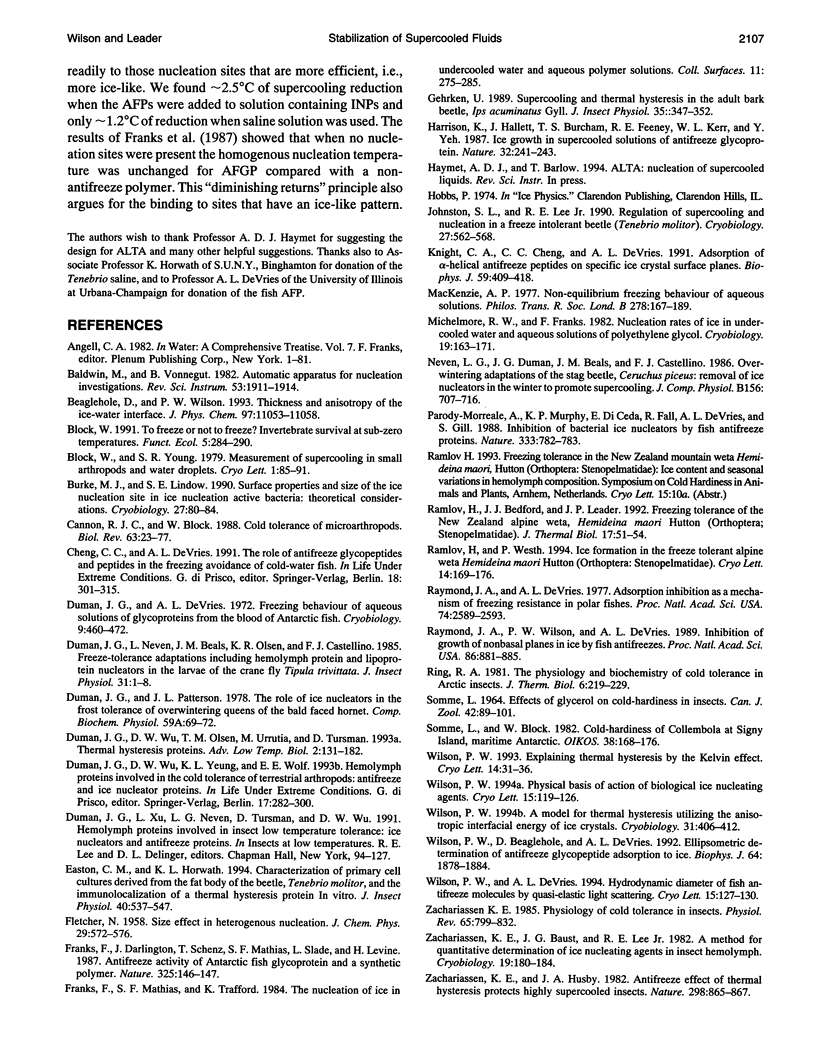
Selected References
These references are in PubMed. This may not be the complete list of references from this article.
- Duman J. G., DeVries A. L. Freezing behavior of aqueous solutions of glycoproteins from the blood of an Antarctic fish. Cryobiology. 1972 Oct;9(5):469–472. doi: 10.1016/0011-2240(72)90166-6. [DOI] [PubMed] [Google Scholar]
- Harrison K., Hallett J., Burcham T. S., Feeney R. E., Kerr W. L., Yeh Y. Ice growth in supercooled solutions of antifreeze glycoprotein. Nature. 1987 Jul 16;328(6127):241–243. doi: 10.1038/328241a0. [DOI] [PubMed] [Google Scholar]
- Knight C. A., Cheng C. C., DeVries A. L. Adsorption of alpha-helical antifreeze peptides on specific ice crystal surface planes. Biophys J. 1991 Feb;59(2):409–418. doi: 10.1016/S0006-3495(91)82234-2. [DOI] [PMC free article] [PubMed] [Google Scholar]
- MacKenzie A. P. Non-equilibrium freezing behaviour of aqueous systems. Philos Trans R Soc Lond B Biol Sci. 1977 Mar 29;278(959):167–189. doi: 10.1098/rstb.1977.0036. [DOI] [PubMed] [Google Scholar]
- Michelmore R. W., Franks F. Nucleation rates of ice in undercooled water and aqueous solutions of polyethylene glycol. Cryobiology. 1982 Apr;19(2):163–171. doi: 10.1016/0011-2240(82)90137-7. [DOI] [PubMed] [Google Scholar]
- Parody-Morreale A., Murphy K. P., Di Cera E., Fall R., DeVries A. L., Gill S. J. Inhibition of bacterial ice nucleators by fish antifreeze glycoproteins. Nature. 1988 Jun 23;333(6175):782–783. doi: 10.1038/333782a0. [DOI] [PubMed] [Google Scholar]
- Patterson N. R. Energy conservation in existing buildings. Heat Piping Air Cond. 1978 Jan;50(1):69–72. [PubMed] [Google Scholar]
- Raymond J. A., DeVries A. L. Adsorption inhibition as a mechanism of freezing resistance in polar fishes. Proc Natl Acad Sci U S A. 1977 Jun;74(6):2589–2593. doi: 10.1073/pnas.74.6.2589. [DOI] [PMC free article] [PubMed] [Google Scholar]
- Raymond J. A., Wilson P., DeVries A. L. Inhibition of growth of nonbasal planes in ice by fish antifreezes. Proc Natl Acad Sci U S A. 1989 Feb;86(3):881–885. doi: 10.1073/pnas.86.3.881. [DOI] [PMC free article] [PubMed] [Google Scholar]
- Wilson P. W., Beaglehole D., Devries A. L. Antifreeze glycopeptide adsorption on single crystal ice surfaces using ellipsometry. Biophys J. 1993 Jun;64(6):1878–1884. doi: 10.1016/S0006-3495(93)81559-5. [DOI] [PMC free article] [PubMed] [Google Scholar]
- Zachariassen K. E., Baust J. G., Lee R. E., Jr A method for quantitative determination of ice nucleating agents in insect hemolymph. Cryobiology. 1982 Apr;19(2):180–184. doi: 10.1016/0011-2240(82)90139-0. [DOI] [PubMed] [Google Scholar]
- Zachariassen K. E. Physiology of cold tolerance in insects. Physiol Rev. 1985 Oct;65(4):799–832. doi: 10.1152/physrev.1985.65.4.799. [DOI] [PubMed] [Google Scholar]


